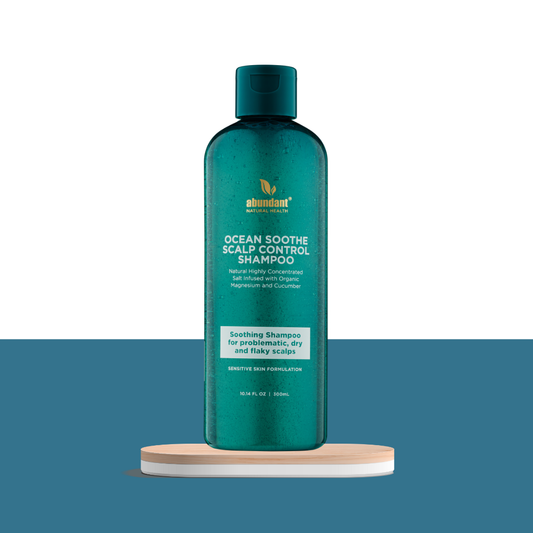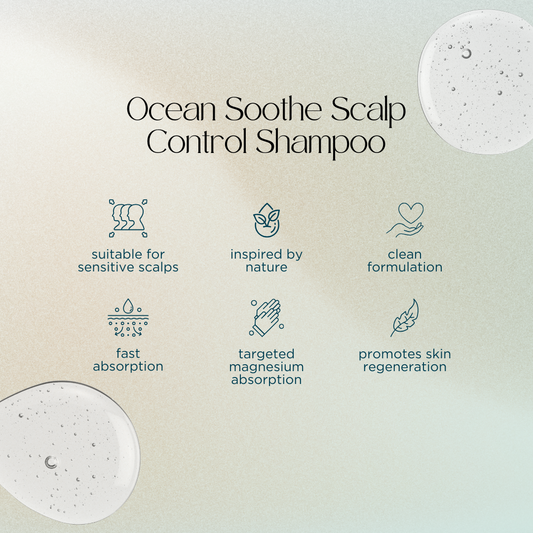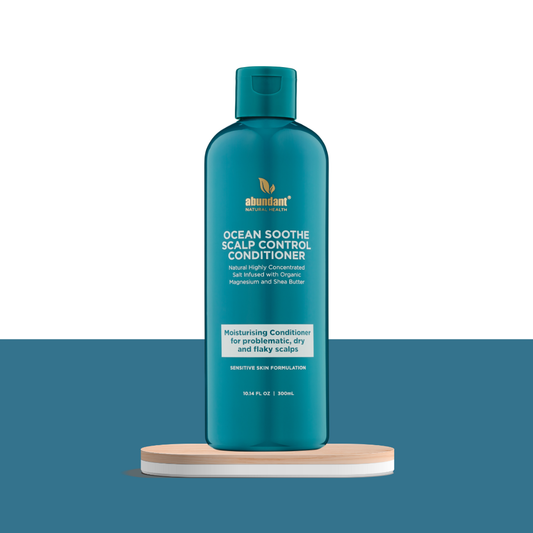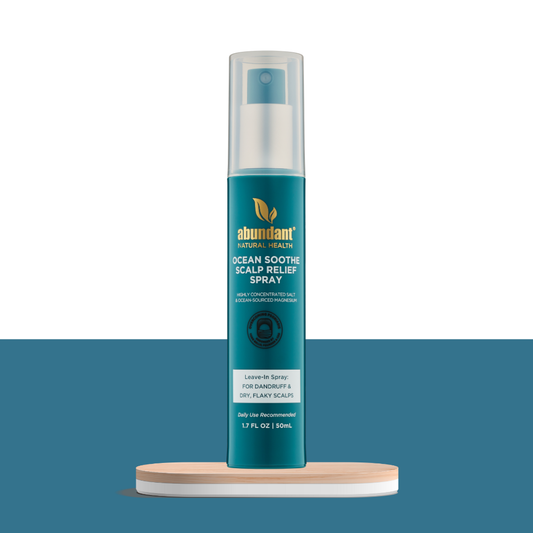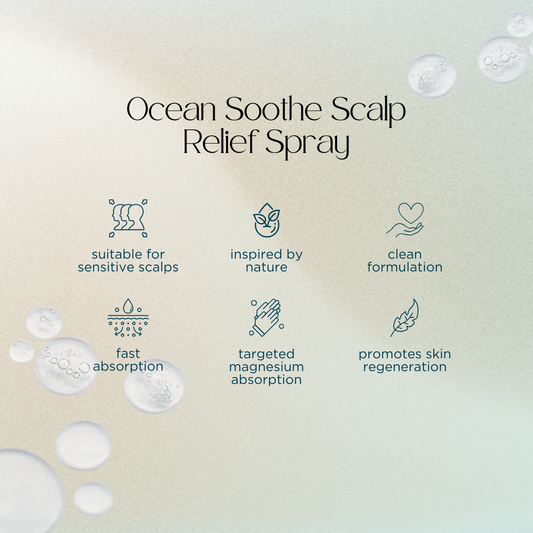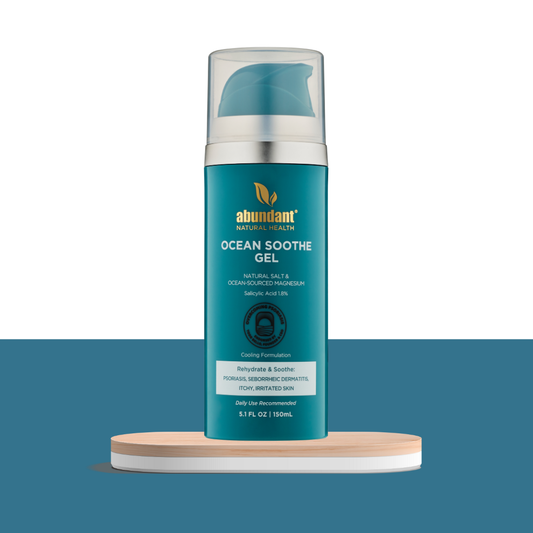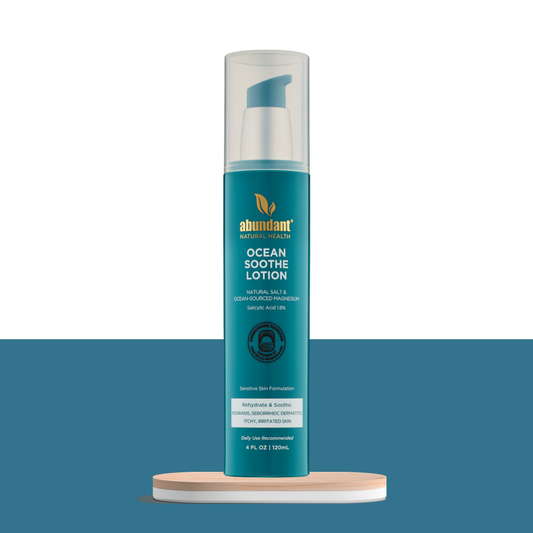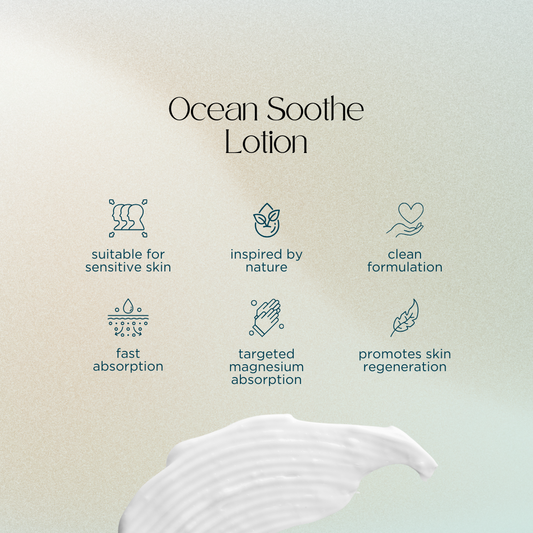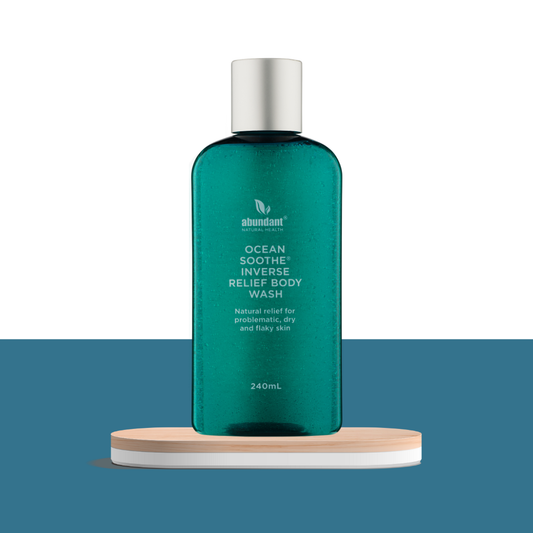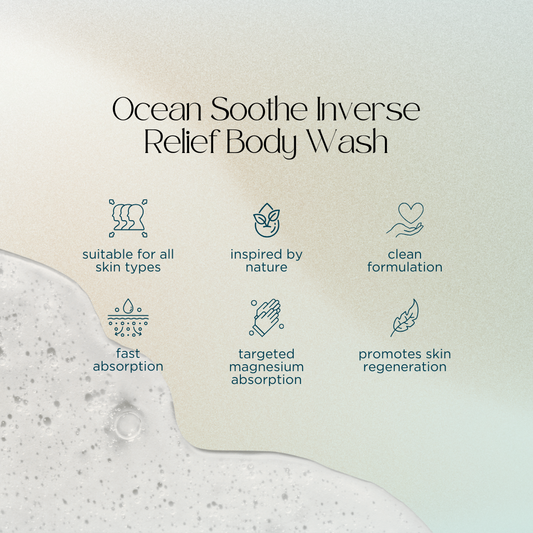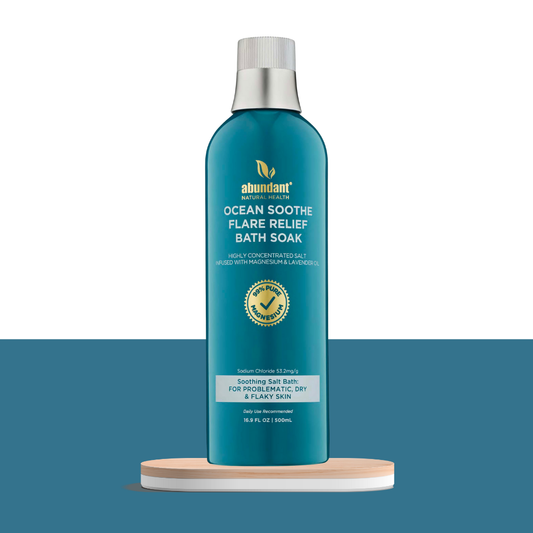Collection: Ocean Soothe
Emollients
Emollients are a great tool to have in your arsenal if you suffer from dry skin. Dry skin is characterised by itchy, dry, and scaly skin, usually on the hands or feet [1]. A common symptom of many skin conditions, dry skin can be exacerbated by high temperatures, low humidity, frequent bathing, and aging skin [2].
What is an emollient?
Emollient meaning
‘Emollient’ refers to products that are applied to the skin. Emollients are designed to improve skin appearance, hydration and treat skin conditions such as psoriasis, eczema, and dermatitis.
Emollients are formulated using oils combined with water to produce the different types available on the market [1] – including creams, gels, ointments, sprays, and soap alternatives.
What do emollients do?
Emollients restore the skin barrier by providing an occlusive layer of protection to prevent further damage, as well as boosting hydration and maintaining the skin’s plasticity [3]. They contain humectants, which draw and hold water in the skin, and lipids (fats) which boost the lipid content of skin cells [4-6] on the skin [4, 7-8].
Emollients may also contain anti-itch agents [4], which help to protect the skin by reducing the urge to scratch. The temptation to scratch, while it may provide temporary relief, breaks the skin’s protective layer, leaving the skin susceptible to micro-organisms which may be sitting on the skin’s surface and under the nails. This leads to more inflammation and itchiness (and so the cycle continues).
What is emollient cream used for?
Are emollients good for skin?
Emollients are great for the skin! Healthy skin has natural moisturisers which protect and prevent it from drying out [3]. Dry skin lacks these natural moisturisers, which leave it prone to damage [3]. When the skin barrier is compromised, water leaks out and the skin becomes more permeable to irritants, allergens, and microorganisms [3]. This water loss causes skin dehydration which contributes to skin cracking, inflammation and pruritis (itching) [3].
Here's where emollients come in. High in natural oils and moisturisers, emollients provide a substitute for this protective barrier, help the skin to regenerate and boosts hydration [3]. Emollients are great adjuncts to treatment for dry skin conditions.
Types of Emollients
Different emollient products are available on the market differ by their fat content [1]. Where the ‘greasier’ emollients in the form of fatty emulsions, ointments and gels contain a higher ratio of fat to water, creams, and sprays contain lower amounts of fat and higher amounts of water [1]. Which type of emollient you use will depend on the severity of your skin condition, the season, time of day, and personal preference [9].
Emollient ointment
As mentioned above, these emollient preparations are ‘greasy’, ‘hold’ more firmly and are therefore more noticeable on the skin. These thicker emollients are great to apply during the day, in cooler weather and on large, flat sections of the skin. They are less preferred in warmer weather, due to increased propensity to sweating, which may enhance the feeling of greasiness.
Ocean Soothe® Gel is a 100% natural emollient formulation which helps to soothe and soften the skin. It is a thick preparation and contains glycerol and aloe vera (a natural emollient) as well as magnesium and salt, provide antiseptic and antimicrobial properties. It is effective in relieving symptoms of mild psoriasis, skin dryness, skin irritation, itchiness, inflammation, scaling and redness.
Emollient cream
Emollient creams are ‘waterier’ when compared to gels and therefore are distributed more easily and evenly on the skin’s surface. These emollients work well when used at night, as they are less likely to stain and mark bed sheets and clothing.
Ocean Soothe Lotion® is a luxurious, creamy emollient formulation high in salt and magnesium infused with olive oil and aloe vera, to hydrate, soothe, and soften the skin. It is non-staining to clothing and relieves symptoms of mild psoriasis, skin dryness, itchiness, inflammation, scaling and redness. To optimise results we recommend combining with Ocean Soothe® Gel.
Emollient spray
Emollient sprays contain have much smaller fat to water ratios. These emollients are very light in comparison to the other types of emollients mentioned, therefore more pumps of the product are needed for similar effect. Emollient sprays are hassle-free and can be used in cases where fast relief from symptoms of dryness or inflammation are required.
Do you have dry, flaky, and problematic scalp? Ocean Soothe® Scalp Spray is a light, natural on-the-go spray for the relief of an irritated scalp and can be applied to the forehead, neck, behind and inside the ears. Great when combined with Ocean Soothe® Scalp Serum!
Soap alternatives
Soap and detergents such as SLS (sodium lauryl sulphate) are not recommended for the treatment of dry and itchy skin as they irritate and strip the skin of its natural oils [10]. It is therefore recommended that leave-in emollients should be paired with emollient, soap-free alternatives. This allows the skin to be cleansed effectively, while preserving the skin barrier and minimising water loss.
Ocean Soothe® Inverse Relief Body Wash is designed to cleanse and relieve problematic skin in folds, creases, and intimate areas of the body. Perfect alternative to soap and SLS free! Containing emollients Cocoamidopropyl Betaine, Sodium Methyl Cocoyl Taurate and Sodium Cocoyl Isethionate, which preserve and protect the skin barrier, rather than strip the skin of its natural oils. For a complete solution we suggest combining Ocean Soothe® Inverse Body Wash with our Ocean Soothe® Gel and Ocean Soothe® Lotion.
How to use emollients
Emollients are effective adjuncts to other treatments used for dry skin. It is important that they are applied correctly to maximise their effect.
As such, 250-500g of emollient should be used per week (more than you think!) to treat dry skin [11-12]. You may decide to combine different emollient preparations – ointments, gels, lotions, creams, and sprays at different times of the day, so make sure you use these products liberally and frequently during the day. In saying this, try to avoid soaps and detergents if you can, as these will expose the skin barrier to further damage [13]. Try an emollient washing product or soap-free alternative.
If you are using a medicinal topical preparation in combination with an emollient, a good rule of thumb is to wait at least 30 minutes between applications of topical flare treatments products and the protective emollient layer to optimise absorption [14].
If you are using an emollient from a tub, it is also good practice to transfer the emollient into a separate container to make sure you aren’t cross contaminating the entire preparation with allergens or bacteria on your skin [3]. Alternatively, use emollient products with a pump to minimise product wastage.
When used correctly, emollients are an effective treatment for dry skin and are a great way to boost your skin health and reduce dryness. With lots of options available to suit all your dry skin needs, try Abundant Natural Health’s Ocean Soothe® Range.
Ocean Soothe® By Abundant Natural Health
Abundant Natural Health’s 100% natural Ocean Soothe® Range, highly concentrated with salt and magnesium, harnesses the healing properties of the ocean for effective relief from symptoms of mild psoriasis, problematic, dry, and flaky skin. We bring the benefits of the Ocean to you, no matter where you are.
Our Ocean Soothe® Range includes a family of products for optimal management of problematic skin, wherever it may be. From emollient scalp serums, sprays, skin gels, lotions, to body washes, bath soaks and a shampoo and conditioner, Abundant Natural Health is your one-stop shop for all things dry and problematic skin.
References
- Marks, R. (1997). Emollients. CRC Press.
- Fazio, S. B., Yosipovitch, G., Dellavalle, R. P., Callen, J., & Ofori, A. O. (2015). Pruritus: Etiology and patient evaluation. UpToDate. Retrieved from https://www.uptodate.com/contents/pruritus-etiology-and-patient-evaluation.
- Moncrieff, G., Cork, M., Lawton, S., Kokiet, S., Daly, C., & Clark, C. (2013). Use of emollients in dry‐skin conditions: consensus statement. Clinical and experimental dermatology, 38(3), 231-238.
- Proksch, E., & Lachapelle, J. M. (2005). The management of dry skin with topical emollients–recent perspectives: Behandlung der trockenen Haut mit topischen Emulsionen–neue Entwicklungen. JDDG: Journal der Deutschen Dermatologischen Gesellschaft, 3(10), 768-774.
- Bissonnette, R., Maari, C., Provost, N., Bolduc, C., Nigen, S., Rougier, A., & Seite, S. (2010). A double‐blind study of tolerance and efficacy of a new urea‐containing moisturizer in patients with atopic dermatitis. Journal of cosmetic dermatology, 9(1), 16-21.
- Wiren, K., Nohlgård, C., Nyberg, F., Holm, L., Svensson, M., Johannesson, A., ... & Lodén, M. (2009). Treatment with a barrier‐strengthening moisturizing cream delays relapse of atopic dermatitis: a prospective and randomized controlled clinical trial. Journal of the European Academy of Dermatology and Venereology, 23(11), 1267-1272.
- Chamlin, S. L., Kao, J., Frieden, I. J., Sheu, M. Y., Fowler, A. J., Fluhr, J. W., ... & Elias, P. M. (2002). Ceramide-dominant barrier repair lipids alleviate childhood atopic dermatitis: changes in barrier function provide a sensitive indicator of disease activity. Journal of the American Academy of Dermatology, 47(2), 198-208.
- Msika, P., De Belilovsky, C., Piccardi, N., Chebassier, N., Baudouin, C., & Chadoutaud, B. (2008). New emollient with topical corticosteroid‐sparing effect in treatment of childhood atopic dermatitis: SCORAD and quality of life improvement. Pediatric Dermatology, 25(6), 606-612.
- Lawton, S. (2009). Practical issues for emollient therapy in dry and itchy skin. British Journal of Nursing, 18(16), 978-984.
- Ananthapadmanabhan, K. P., Moore, D. J., Subramanyan, K., Misra, M., & Meyer, F. (2004). Cleansing without compromise: the impact of cleansers on the skin barrier and the technology of mild cleansing. Dermatologic therapy, 17, 16-25.
- Primary Care Dermatology Society and British Association of Dermatologists. (2009). Guidelines on the Management of Atopic Eczema, Vol. 39. Berkhamsted: Medendium Group Publishing, 2009; 399– 402.
- Cork, M. J., Britton, J., Butler, L., Young, S., Murphy, R., & Keohane, S. G. (2003). Comparison of parent knowledge, therapy utilization and severity of atopic eczema before and after explanation and demonstration of topical therapies by a specialist dermatology nurse. British Journal of Dermatology, 149(3), 582-589.
- Cork, M. J. (1998). Complete emollient therapy. The National Association of Fundholding Practices Official Yearbook. BPC Waterlow, Dunstable, 159-168.
- Lewis-Jones, S., Cork, M., & Clark, C. (2007). Atopic eczema in children–guideline consultation: a systematic review of the treatments for atopic eczema and guideline for its management. London: National Institute for Clinical Excellence (NICE).
Disclaimer: This site does not provide medical advice. The author is not a medical professional, dietician, or nutritionist. This website is intended for informational purposes only and it is not a substitute for professional medical advice, diagnosis, or treatment. By providing the information contained herein we are not diagnosing, treating, curing, mitigating, or preventing any type of disease of medical condition. Patients should not use the information contained on this website to self-diagnose or self-treat any health-related condition. Never ignore professional medical advice in seeking treatment because of something you have read on this website. Before beginning any type of natural, integrative, or conventional treatment regimen, it is advisable to seek the advice of a licensed healthcare professional. Information is gathered and shared from reputable sources; however, Abundant Natural Health is not responsible for errors or omissions in reporting or explanation.
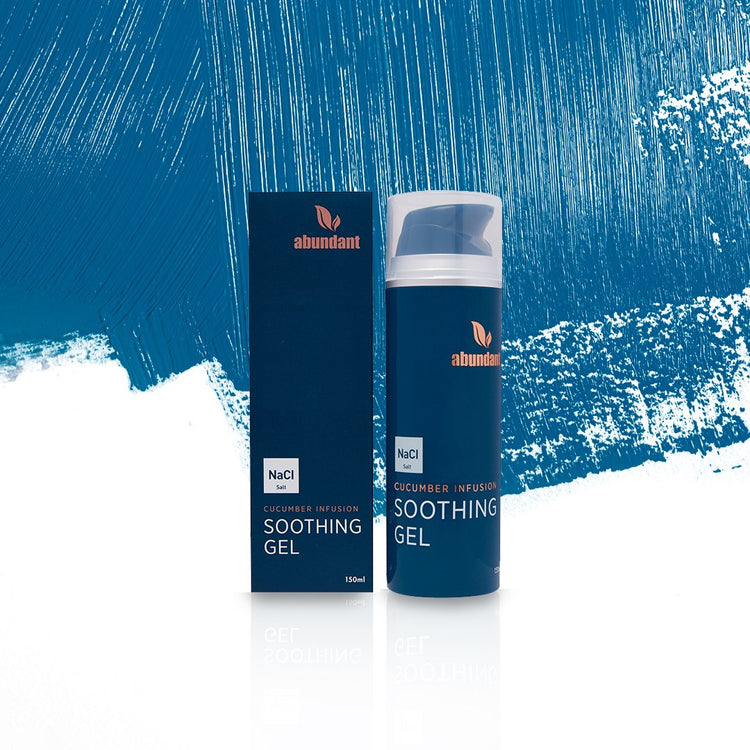
-
Ocean Soothe Scalp Control Shampoo (300ML/10.14OZ)
Regular price $17.99 USDRegular priceUnit price / per -
Ocean Soothe Scalp Control Conditioner (300ML/10.14OZ)
Regular price $17.99 USDRegular priceUnit price / per -
Ocean Soothe Scalp Relief Serum (50mL/1.6oz)
Regular price $9.55 USDRegular priceUnit price / per -
Ocean Soothe Scalp Spray 60ml
Regular price $9.55 USDRegular priceUnit price / per -
Ocean Soothe Gel (150mL/5.1oz)
Regular price $19.99 USDRegular priceUnit price / per -
Ocean Soothe® Lotion (120mL/4oz)
Regular price $19.99 USDRegular priceUnit price / per -
Ocean Soothe® Inverse Relief Body Wash (240mL/8.1oz)
Regular price $18.99 USDRegular priceUnit price / per -
Ocean Soothe Flare Relief Bath Soak (500mL/16.9oz)
Regular price $19.99 USDRegular priceUnit price / per

